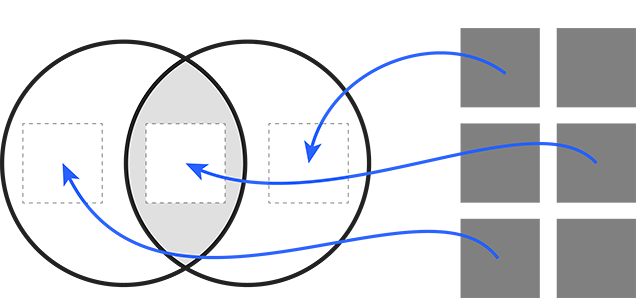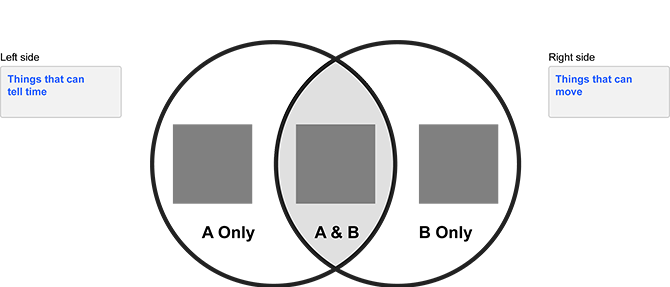Little Town on the Plains: Keota, Colorado
Montgomery Ward Catalog
Guiding Question
How does life today compare to living in Keota in the 1900s?
Anything you might have needed--and many things you probably didn't--could be ordered from one of Chicago's huge mail-order companies. Both Montgomery Ward (1872) and Sears (1888) catered especially to rural families. When Rural Free Delivery began in 1896, people living in towns like Keota had access to everything in the catalogs. The average family in Keota made three catalog orders a year, spending about $5 an order. Look through a selection of items from the Montgomery Ward catalog. What do you notice about the items available for purchase?
Object of the game
Apples to Oranges is a game where players create associations between objects using Venn diagrams. An association is a connection between two things. To find an association, think about how the objects and media are the same or different. The associations are up to each player or group and there are no wrong answers. Venn diagrams are illustrations that use overlapping circles to show the similarities and differences between things. The intersection of the circles is what the things have in common, while the things on each side of the circles that do not overlap are unique. They help to visually represent the similarities and differences between two concepts. The goal of the game is to encourage players to think critically about items or topics and focus on skill building by making observations, drawing connections, sorting, categorizing, and engaging in collaborative dialogue.
Step 1: Moderator chooses objects from sidebar

Step 2: Other players create labels

Step 3: Everyone discusses the diagrams and defends their creation

Step 4: Moderator chooses their favorite and awards a point

Game requirements
Each player or team is required to connect via computer, tablet, or mobile device and have a way to receive a link to the game.
The game can be played in the classroom or remotely. If played remotely, the players must coordinate a discussion on an agreed upon online messaging system such as group text, Microsoft Teams, Slack, etc.
How to play
One player or group starts the game and generates a link that they send to other players or groups. This player or group will serve as the first moderator. The other players or groups click on the link to join in.
Each player or group creates a unique name for themselves or their team.
Players will meet in a waiting room until all players or groups have joined. You need to have at least 3 players or teams to begin the game. (If a player or group joins in the game while another round is in session, they will wait in the waiting room until the current round is finished and then be able to join the game.)
Press the “Begin Round” button to start the game.
For each round, one player or group will serve as moderator. The player or group who starts the game serves as the first moderator. For each subsequent round, the moderator role will move randomly to another player or group.
The moderator has 30 seconds to choose objects from the right sidebar and drop them into a blank diagram. They then send the diagram to the other players for labelling.
The other players or groups have 30 seconds to add labels to the diagram. The labels should compare the objects by differences or similarities. They then send their completed diagrams back to the moderator.
The moderator looks at each diagram and questions the other players or teams about why they came up with those labels.
The moderator determines which labels are their favorite and awards a point to that player or team.
The game proceeds to the next round where another player or group serves as moderator. There is no limit to the rounds that can be played.